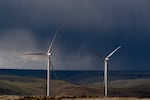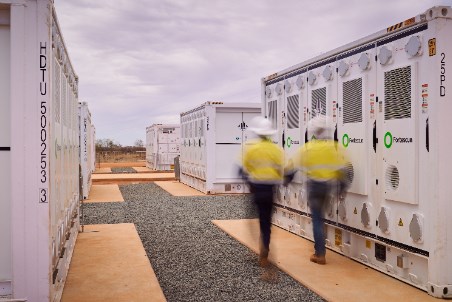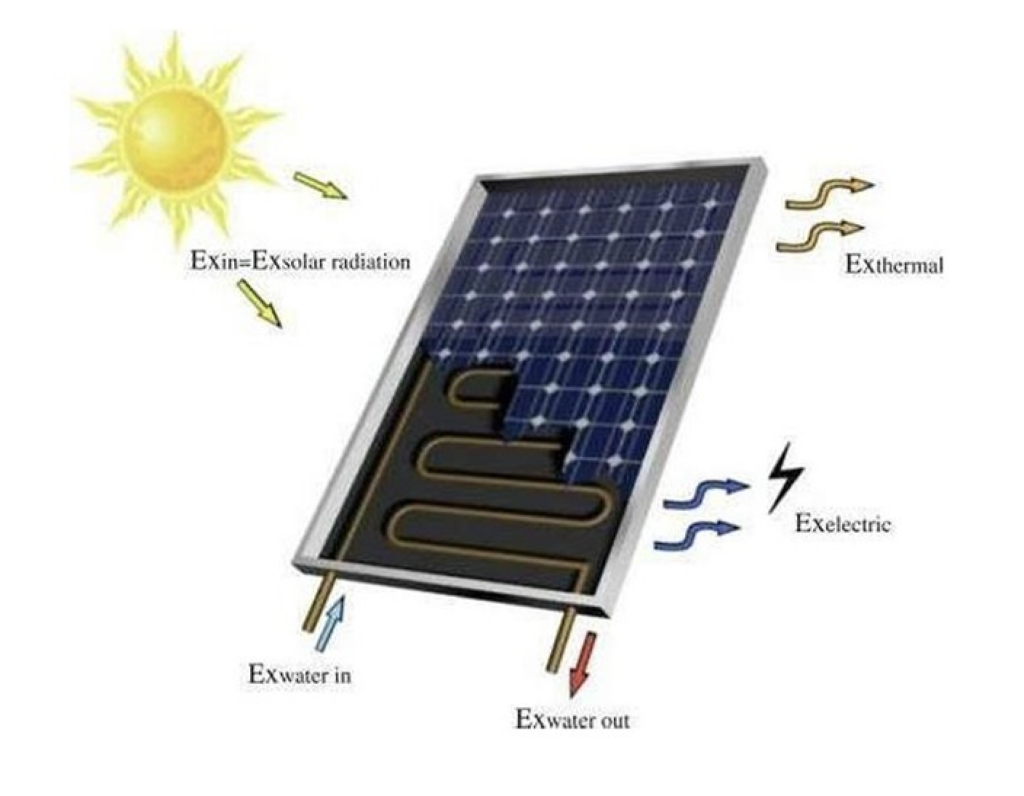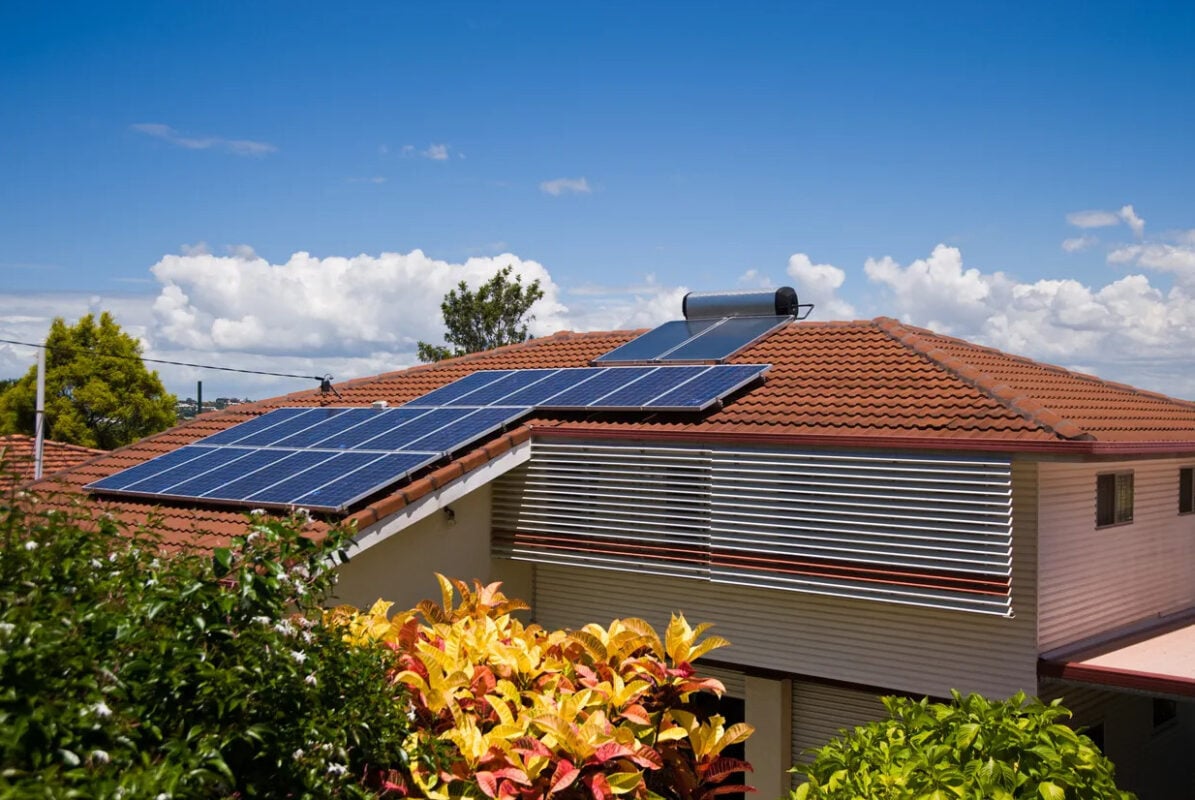Gov. Kotek orders state agencies to move faster on clean energy projects, electrification – Oregon Public Broadcasting – OPB

Report on Oregon’s Executive Actions to Advance Sustainable Development Goals through Clean Energy Initiatives
Executive Mandate for Accelerated Climate Action and Energy Transition
An executive order has been issued by Governor Tina Kotek to accelerate state efforts in addressing climate change, directly supporting Sustainable Development Goal 13 (Climate Action). The directive mandates state agencies to expedite processes for renewable energy development to ensure a sustainable, reliable, and affordable energy future for Oregon, aligning with Sustainable Development Goal 7 (Affordable and Clean Energy).
Strategic Objectives and Alignment with Sustainable Development Goals
The governor’s order outlines several key objectives that align with multiple SDGs:
- SDG 13 (Climate Action): Advance the state’s established targets for reducing greenhouse gas pollution by 50% by 2035 and 90% by 2050.
- SDG 7 (Affordable and Clean Energy): Prioritize the deployment of solar, wind, geothermal, and wave energy projects, along with significant energy storage solutions.
- SDG 9 (Industry, Innovation, and Infrastructure): Reform and accelerate project siting, permitting, and grid connection processes for renewable energy infrastructure.
- SDG 11 (Sustainable Cities and Communities): Implement policies and incentives to promote the electrification of vehicles, heating/cooling systems, and appliances, making communities more energy-efficient.
Key Directives and Implementation Framework
Accelerated Permitting and Infrastructure Development (SDG 9 & SDG 7)
State agencies are directed to fast-track permitting and siting reviews to leverage federal clean energy tax credits from the Inflation Reduction Act. This action is critical for the timely development of wind and solar projects.
- Project Siting and Permitting: Streamline analysis, review, and comment periods for renewable energy projects and electrical grid upgrades.
- Grid Modernization: Address significant delays in grid updates, particularly those managed by the Bonneville Power Administration (BPA), to integrate new renewable energy sources effectively. The governor has called for the BPA to improve its partnership with the state.
- Energy Storage: The state strategy includes a target of adding 8 gigawatts of energy storage by 2045, a crucial component for a stable and reliable renewable energy grid.
Inter-Agency Collaboration for Sustainable Communities (SDG 17 & SDG 11)
The executive order emphasizes cross-agency collaboration to achieve integrated sustainability outcomes.
- Clean Fuels Program: The Department of Environmental Quality (DEQ) and the Public Utility Commission (PUC) will collaborate to ensure revenue from the Clean Fuels Program is invested in transportation electrification, with a focus on:
- Low-income communities
- Multifamily housing sites
- Areas underserved by commercial EV chargers
- Land Use Planning: The Department of Land Conservation and Development is tasked with proposing changes to state land planning regulations to facilitate clean energy development and establish new transmission corridors.
Promoting Responsible Consumption and Production (SDG 12)
The state aims to lead by example in adopting sustainable practices.
- Fuel Carbon Intensity: A new goal has been set to reduce the carbon intensity of fuels by 50% or more by 2040, promoting the use of biofuels, hydrogen, and electricity.
- Government Fleet Electrification: The Department of Administrative Services is directed to prioritize the purchase of zero-emission vehicles for the state fleet and must justify any acquisition of combustion-engine vehicles.
Timeline and Reporting
A structured timeline has been established to ensure accountability and progress towards these goals.
- September 2026: Deadline for inter-agency collaboration to produce comprehensive strategies.
- 2027: Policy proposals based on these strategies are to be presented to the Legislature.
- Quarterly Updates: Agencies are required to provide regular progress reports to the governor’s office.
Agencies are expected to utilize existing resources to meet these directives, identifying any funding challenges for consideration in the next biennial budget cycle.
Analysis of Sustainable Development Goals in the Article
1. Which SDGs are addressed or connected to the issues highlighted in the article?
The article on Oregon’s climate and energy policy addresses several interconnected Sustainable Development Goals (SDGs). The primary focus is on transitioning to clean energy and combating climate change, but the specific actions and policies mentioned also touch upon infrastructure, sustainable communities, and partnerships.
- SDG 7: Affordable and Clean Energy: This is the most central SDG in the article. The entire text revolves around the state’s efforts to ensure “longterm renewable energy power that is cheap and reliable for Oregonians.” It details plans for deploying more solar, wind, geothermal, and wave energy projects, as well as improving energy efficiency.
- SDG 13: Climate Action: The article explicitly states that the governor’s executive order is designed to “move faster to address climate change.” It directly references Oregon’s targets for reducing greenhouse gas pollution, which is the core objective of SDG 13.
- SDG 9: Industry, Innovation and Infrastructure: The need for resilient and sustainable infrastructure is a key theme. The article highlights the inadequacy of the current electrical grid, the need for “grid upgrades and transmission corridors,” and the importance of reforming project siting and permitting to support new energy projects.
- SDG 11: Sustainable Cities and Communities: The article discusses policies aimed at making communities more sustainable, particularly through transportation. It mentions investing in “transportation electrification and infrastructure in low-income communities, at multifamily housing sites” and replacing gas cars and buses with electric ones.
- SDG 17: Partnerships for the Goals: The implementation of Oregon’s energy strategy relies heavily on collaboration. The article mentions that the governor “called on more than a dozen state land and natural resource agencies to collaborate on strategies” and highlights the need for the federal Bonneville Power Administration (BPA) to be a “better partner.”
2. What specific targets under those SDGs can be identified based on the article’s content?
Based on the policies and goals described, several specific SDG targets can be identified:
- Target 7.2: By 2030, increase substantially the share of renewable energy in the global energy mix.
- The article directly supports this target by mentioning Oregon’s strategy to prioritize the “deployment of more solar, wind, geothermal and wave energy projects.”
- Target 7.3: By 2030, double the global rate of improvement in energy efficiency.
- This is addressed through policies that include “cash incentives that make it more affordable to… make homes and businesses more energy-efficient.”
- Target 9.1: Develop quality, reliable, sustainable and resilient infrastructure… to support economic development and human well-being.
- The article points to this target by discussing the need to reform “project siting and permitting for electrical grid upgrades and transmission corridors” to handle new renewable energy sources, addressing that the current grid has been without updates for nearly a century.
- Target 11.2: By 2030, provide access to safe, affordable, accessible and sustainable transport systems for all.
- This is reflected in the plan to use revenue from the Clean Fuels Program for “transportation electrification and infrastructure in low-income communities” and the directive for state agencies to purchase “zero-emission vehicles.”
- Target 13.2: Integrate climate change measures into national policies, strategies and planning.
- The governor’s executive order is a direct example of integrating climate change measures into state-level policy. The article states the order directs agencies to “advance the state’s target of reducing greenhouse gas pollution.”
- Target 17.14: Enhance policy coherence for sustainable development.
- The governor’s order for “more than a dozen state land and natural resource agencies to collaborate on strategies” is a clear effort to ensure different parts of the government are working together coherently towards the state’s energy and climate goals.
3. Are there any indicators mentioned or implied in the article that can be used to measure progress towards the identified targets?
Yes, the article mentions several specific, quantifiable metrics that can serve as indicators to measure progress.
- Indicator for Target 7.2 (Renewable Energy Share): The article mentions a specific goal to “add 8 gigawatts of energy storage by 2045.” The amount of new renewable energy capacity (in gigawatts) from solar, wind, geothermal, and wave projects would be a direct indicator.
- Indicator for Target 13.2 (Climate Action Integration): The article provides precise quantitative indicators for greenhouse gas reduction.
- The target of “reducing greenhouse gas pollution 50% by 2035 and 90% by 2050.”
- The requirement for the Clean Fuels Program to “cut emissions at least 37% by 2035.”
- The call for the “carbon intensity of fuels to be reduced 50% or more by 2040.”
- Indicator for Target 11.2 (Sustainable Transport): Progress can be measured by the number of zero-emission vehicles purchased by the state. The article notes that the Department of Administrative Services must “report to the governor at the end of each year on why it bought or leased any new combustion-engine vehicles,” implying that the number of ZEVs procured is a key metric. The number of EV chargers installed in low-income and multifamily housing areas is another implied indicator.
- Indicator for Policy Implementation: The article mentions that “Agencies will provide quarterly progress updates,” which serves as a procedural indicator to track the implementation of the executive order and its associated goals.
4. Summary Table of SDGs, Targets, and Indicators
| SDGs | Targets | Indicators |
|---|---|---|
| SDG 7: Affordable and Clean Energy | 7.2: Increase substantially the share of renewable energy in the global energy mix. | – Deployment of new solar, wind, geothermal, and wave energy projects. – Addition of 8 gigawatts of energy storage by 2045. |
| SDG 13: Climate Action | 13.2: Integrate climate change measures into national policies, strategies and planning. | – Reduction of greenhouse gas pollution by 50% by 2035 and 90% by 2050. – Reduction of fuel carbon intensity by at least 37% by 2035 and 50% by 2040. |
| SDG 9: Industry, Innovation and Infrastructure | 9.1: Develop quality, reliable, sustainable and resilient infrastructure. | – Number of permits for energy projects fast-tracked. – Miles of new electrical grid upgrades and transmission corridors built. |
| SDG 11: Sustainable Cities and Communities | 11.2: Provide access to safe, affordable, accessible and sustainable transport systems for all. | – Number of zero-emission vehicles purchased for the state fleet. – Number of EV chargers installed in low-income and multifamily housing areas. |
| SDG 17: Partnerships for the Goals | 17.14: Enhance policy coherence for sustainable development. | – Collaboration established between more than a dozen state agencies. – Quarterly progress updates from agencies on collaborative strategies. |
Source: opb.org
What is Your Reaction?
 Like
0
Like
0
 Dislike
0
Dislike
0
 Love
0
Love
0
 Funny
0
Funny
0
 Angry
0
Angry
0
 Sad
0
Sad
0
 Wow
0
Wow
0

















































.jpg.webp?itok=0ZsAnae9#)

























